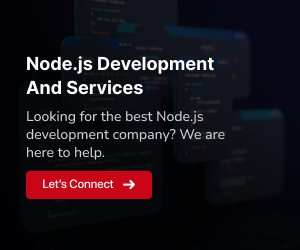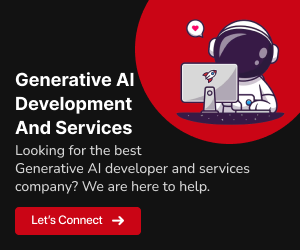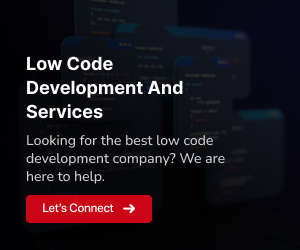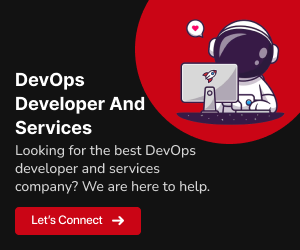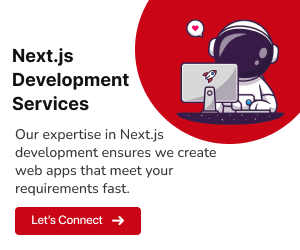In the ever-evolving world of web development, React has emerged as a dominant player, empowering developers to build dynamic and engaging applications. However, to create content-rich websites and applications, a robust content management system (CMS) is crucial. In this article, we’ll explore the advantages of using React in web development and delve into the world of headless CMS, discussing why they are a perfect match. Finally, we’ll unveil the top 10 best headless CMS options for React projects.
React: Transforming Web Development
React, developed and maintained by Facebook, has become a go-to choice for web developers worldwide. Its popularity can be attributed to several advantages
Efficient and Reusable Components:
React’s component-based architecture allows developers to create reusable UI components, making it easier to maintain and scale applications.Virtual DOM:
React’s virtual DOM efficiently updates the actual DOM, reducing the need for full page refreshes and enhancing performance.Large Ecosystem:
React has a vast ecosystem with numerous libraries, tools, and resources, making it easier to find solutions to common development challenges.Fast Rendering:
React’s lightweight and efficient rendering process ensures fast load times and improved user experience.Community Support:
A thriving and active community continually contributes to React’s development and helps troubleshoot issues.
Understanding CMS: Headless vs. Traditional
A CMS is a software application that facilitates content creation, management, and publication. There are two primary types of CMS: headless and traditional.
Traditional CMS
Traditional Content Management Systems (CMS) are comprehensive, all-in-one solutions designed to handle both content management and presentation. Platforms like WordPress, Joomla, Drupal, and many others fall under this category. Here are some key characteristics of Traditional CMS
Content and Presentation Together:
In a traditional CMS, content and presentation are intricately linked. Content creators typically input and manage content within the same platform where it’s immediately presented to end-users.Templates and Themes:
Traditional CMS platforms often use templates and themes to define the structure and design of the website. These templates are tightly linked to the content, and changes in templates can affect how content is displayed.Ease of Use:
Traditional CMS platforms are well-known for their user-friendly interfaces. They are designed to be accessible to non-technical users, such as content editors and marketers.WYSIWYG Editors:
What-You-See-Is-What-You-Get (WYSIWYG) editors are a staple in Traditional CMS, enabling content creators to format and style content effortlessly, even without in-depth knowledge of HTML or CSS.Monolithic Nature:
Traditional CMS systems are monolithic, meaning they include all the necessary components for content management, presentation, and often additional features like user management and e-commerce.
Headless CMS
Headless Content Management Systems, on the other hand, take a different approach by separating content from the presentation layer. In a headless CMS, content is stored and managed independently of how it will be presented to users. Here are some key characteristics of Headless CMS
Content and Presentation Separation:
Headless CMS systems decouple content from the presentation layer, offering more flexibility. Content is stored and managed in a structured way, and developers have the freedom to determine how it’s presented.API-Driven:
Headless CMS platforms provide content via APIs (Application Programming Interfaces), allowing developers to fetch content and display it in various formats, such as websites, mobile apps, or any other digital channel.Custom Presentation:
Developers have full control over how the content is presented. This allows for custom designs, interactive features, and the ability to adapt content for different devices and platforms.Performance and Speed:
Headless CMS can enhance website performance by delivering content via APIs, diminishing the need for server-side rendering and facilitating quicker loading times.Scalability:
Headless CMS solutions are highly scalable, making them suitable for projects of all sizes, from small blogs to large enterprise applications.Multi-Channel Content:
Content can be repurposed and delivered to multiple channels and devices, making it ideal for omnichannel content strategies.
Also Read: How to Use React with Redux: Beginner’s Guide
Why Choose Headless CMS for React?
Headless CMS is gaining popularity among React developers due to several reasons
Flexibility:
With a headless CMS, developers have complete control over the frontend, allowing for custom designs and interactive features.Enhanced Performance:
Headless CMS accelerates loading times by delivering content through APIs, diminishing the dependence on server-side rendering.Multi-Channel Content:
Content can be easily repurposed for various platforms and devices, making it ideal for omnichannel strategies.Scalability:
Headless CMS is highly scalable, making it suitable for projects of all sizes, from small blogs to enterprise-level applications.Future-Proofing:
As technology evolves, headless CMS solutions can adapt, ensuring your content remains relevant and accessible.
The Top 10 Best Headless CMS for React Projects
1. Strapi
Strapi is an open-source, self-hosted headless CMS known for its developer-friendliness and customizability. It allows developers to define content structures and APIs quickly.
Key Features
- Customizable API creation.
- A user-friendly admin panel.
- Support for various databases.
Ideal For: Developers who need a flexible and extensible CMS solution.
2. Contentful
Contentful is a developer-first headless CMS that offers a rich feature set. It focuses on providing a structured approach to content modeling.
Key Features
- Highly customizable content modeling.
- Content delivery via APIs.
- Strong versioning and localization support.
Ideal For: Projects requiring a powerful and extensible content management solution.
3. Prismic
Prismic is a user-friendly headless CMS with a visual editor, making it accessible to non-technical users. It’s designed for efficient content management.
Key Features
- Visual content editor.
- Integration with popular development frameworks.
- Great for content-heavy websites.
Ideal For: Teams seeking an intuitive CMS that streamlines content management.
4. Sanity
Sanity is a real-time collaborative content platform with a high degree of customizability. It caters to developers and content creators.
Key Features
- Real-time collaborative editing.
- Extensive customization options.
- Support for structured content.
Ideal For: Projects that require real-time content updates and structured data.
5. Storyblok
Storyblok offers a visual headless CMS with real-time content editing capabilities. It’s designed for marketing teams and content creators.
Key Features
- Visual content editor.
- Real-time content updates.
- Multi-language support.
Ideal For: Marketing teams and content creators looking for an easy-to-use CMS.
6. Netlify CMS
Netlify CMS is a headless CMS built on Git, seamlessly integrating with Netlify hosting to deliver a comprehensive JAMstack solution.
Key Features
- Git-based content management.
- Integration with Netlify.
- Supports multiple content formats.
Ideal For: JAMstack projects and developers who prefer Git-based workflows.
7. DatoCMS
DatoCMS is a highly structured and customizable headless CMS, making it easy to manage content for various types of projects.
Key Features
- Structured content modeling.
- Customizable data structures.
- Rich text and media support.
Ideal For: Developers seeking a structured and versatile CMS for different project types.
8. Kentico Kontent
Kentico Kontent is a comprehensive headless CMS designed for scalability and enterprise-level applications. It offers a feature-rich content management solution.
Key Features
- Scalable and secure.
- Robust content modeling.
- Supports content collaboration.
Ideal For: Enterprise-level projects that require robust content management.
9. GraphCMS
GraphCMS leverages GraphQL to efficiently deliver content. It’s suitable for developers who prefer a schema-first approach to content modeling.
Key Features
- GraphQL-based content APIs.
- Content localization.
- Rich text and media support.
Ideal For: Developers who want to leverage GraphQL and a structured content model.
10. Agility CMS
Agility CMS offers a cloud-based, headless CMS with a user-friendly interface. It’s a great choice for teams of all sizes, providing an intuitive content management experience.
Key Features
- Cloud-based content storage.
- User-friendly interface.
- Flexible content modeling.
Ideal For: Teams seeking a hassle-free CMS with cloud-based hosting.
Related: React Basics: How to Learn React From Scratch
Conclusion
React’s strengths in creating dynamic and interactive web applications are further enhanced when coupled with a headless CMS. By choosing a headless CMS, developers gain the flexibility, performance, and scalability needed to build content-rich websites and applications that meet the demands of the modern web. The top 10 headless CMS options highlighted in this article provide an array of choices to suit the specific needs of any React project, ensuring a seamless development experience and exceptional user engagement.





















